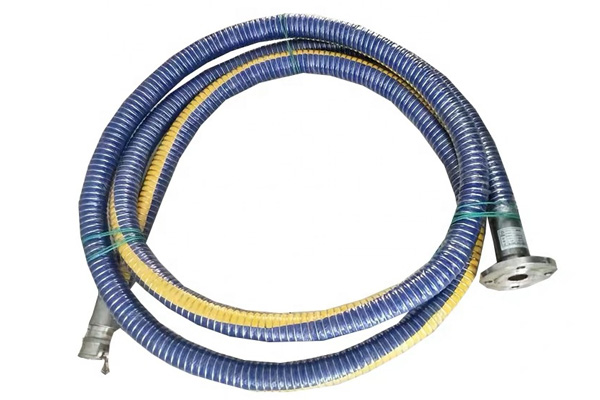| Products List | ||
| Online Service | ||
|
||
|
||
|
||
| Social Network Site | ||
| Compound Hose vs. Metal Hose: Differences and Advantages |
|
Hoses are essential components in various industries, serving as conduits for the transfer of fluids, gases, and materials. Two common types of hoses used for different applications are compound hoses and metal hoses. In this article, we will explore the differences between these two types of hoses and their respective advantages. Compound Hose:
1. Material Composition: Compound hoses are typically made of multiple layers of synthetic materials such as PVC, rubber, or thermoplastic compounds. These materials are chosen for their flexibility, chemical resistance, and durability. 2. Flexibility: Compound hoses are highly flexible, making them suitable for applications where bending and maneuverability are required. They can often be coiled for storage, making them space-efficient. 3. Chemical Resistance: Compound hoses are designed to resist a wide range of chemicals and fluids, making them versatile for various industrial applications. They are often used for transporting acids, bases, and other corrosive materials. 4. Temperature Range: Compound hoses have a moderate temperature tolerance, typically ranging from -40°C to 80°C (-40°F to 176°F). Specialized compound hoses can be designed for extreme temperature conditions. Advantages of Compound Hose: Cost-effective: Compound hoses are generally more affordable than metal hoses. Lightweight: They are lightweight, making them easier to handle and install. Versatile: Suitable for a wide range of applications due to their chemical resistance and flexibility. Metal Hose:
1. Material Composition: Metal hoses are constructed from various types of metals, including stainless steel, bronze, or other alloys. The metal layers provide high strength and durability. 2. Flexibility: Metal hoses have a degree of flexibility, but they are less flexible than compound hoses. They are often used in applications where rigidity and stability are crucial. 3. Pressure and Temperature Resistance: Metal hoses can handle high-pressure applications, making them suitable for hydraulic and pneumatic systems. They have an excellent temperature range, typically from -200°C to 800°C (-328°F to 1472°F). 4. Corrosion Resistance: Metal hoses are highly resistant to corrosion and can withstand exposure to extreme environmental conditions. They are commonly used in applications where chemical compatibility is a concern. Advantages of Metal Hose: High Pressure Handling: Metal hoses excel in high-pressure applications, making them ideal for heavy-duty industrial uses. Temperature Extremes: They can withstand extreme temperatures, making them suitable for both cryogenic and high-temperature applications. Longevity: Metal hoses have a longer lifespan compared to compound hoses, reducing maintenance costs over time. In summary, the choice between compound hoses and metal hoses depends on the specific requirements of the application. Compound hoses offer cost-effectiveness, flexibility, and chemical resistance, while metal hoses provide superior pressure and temperature capabilities, as well as exceptional durability. Understanding the differences and advantages of each type of hose is crucial in selecting the right one for your industrial or commercial needs.
|


